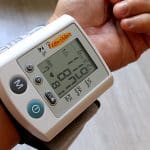- Preventive health screenings can catch issues early, often before symptoms appear.
- Recommendations vary by age, risk factors, and family history.
- Staying on top of screenings helps improve long-term health and quality of life.
Why Screenings Matter.
Regular health screenings are one of the best ways to detect problems early, when they are most treatable. Men often skip routine checkups, but screenings can uncover hidden risks such as high blood pressure, diabetes, or cancer. Preventive care isn’t just about living longer—it’s about staying healthy and active at every stage of life.
For a full overview of recommended preventive care, the U.S. Preventive Services Task Force (USPSTF) and Centers for Disease Control and Prevention (CDC) offer regularly updated guidelines:
In Your 30s: Building a Baseline.
Men in their 30s should focus on establishing a health baseline. Even if you feel fine, conditions like high blood pressure and high cholesterol can develop silently.
Recommended screenings in your 30s:
-
Blood pressure: At least once every 3–5 years if normal, more often if elevated (CDC).
-
Cholesterol: At least once between ages 20–39; more often if you have risk factors like obesity or family history (American Heart Association).
-
Diabetes (blood sugar/A1C test): If overweight or with family history (American Diabetes Association).
-
Testicular exam: Awareness of changes is important; most cases are found by men themselves (American Cancer Society).
In Your 40s: Watching for Hidden Risks.
By your 40s, risk for chronic conditions such as diabetes, heart disease, and certain cancers increases.
Recommended screenings in your 40s:
-
Blood pressure: Every year.
-
Cholesterol: Every 4–6 years, or more often if high.
-
Diabetes: Every 3 years starting at age 45 (CDC).
-
Colorectal cancer: Begin conversations with your doctor if you have a family history (American Cancer Society).
-
Eye exam: Every 2–4 years to check for glaucoma and vision changes.
In Your 50s and Beyond: Cancer and Heart Health
Once you hit 50, routine screenings become even more critical as risks rise significantly.
Recommended screenings at 50+:
-
Colorectal cancer: Start at 45 for average-risk men, continue until age 75 (CDC).
-
Prostate cancer (PSA test): Discuss benefits and risks with your doctor, usually starting at 50, earlier if high-risk (American Cancer Society).
-
Lung cancer: Annual low-dose CT scan if age 50–80 and have a history of heavy smoking (USPSTF).
-
Bone density test: Especially if you have risk factors such as long-term steroid use or family history.
-
Heart health: Ongoing checks of blood pressure, cholesterol, and diabetes.
Beyond Age: Screening Depends on Risk
While age is a guideline, personal risk factors matter. Men with family histories of heart disease, cancer, or diabetes may need earlier or more frequent screenings. Lifestyle choices—such as smoking, alcohol use, and physical activity—also play a role in determining when screenings are needed.
The Bottom Line
Men’s health screenings are not just “doctor visits”—they’re investments in long-term wellbeing. From your 30s through your 50s and beyond, knowing what to check and when can make a major difference. Talk with your healthcare provider about what’s right for your personal health history and risk factors.





